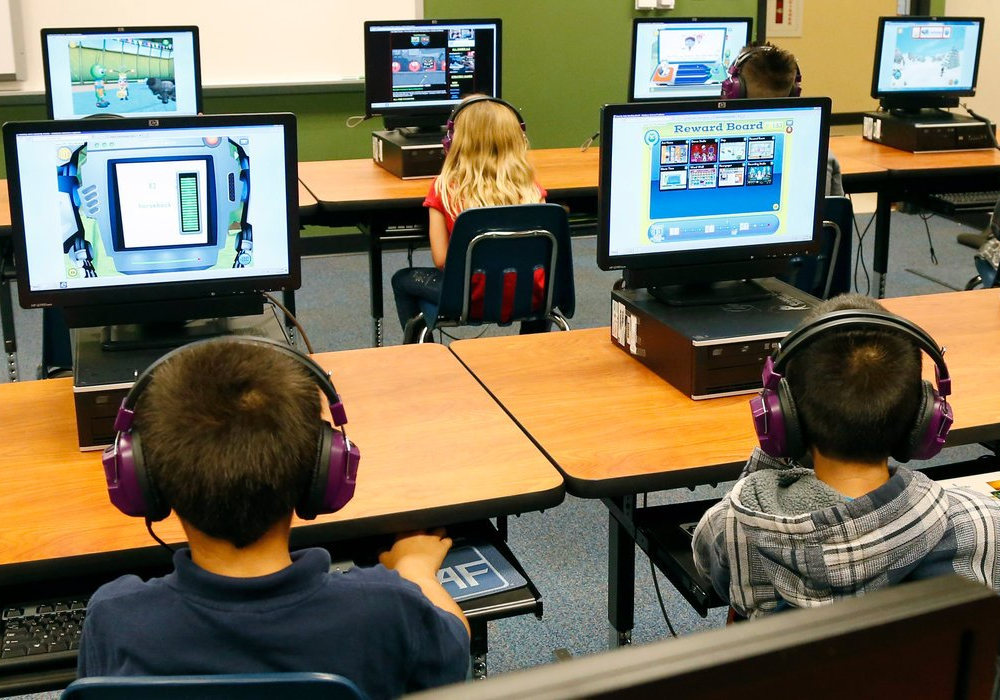Schools Making Changes to Incorporate the Information Age
No matter how powerful, high tech alone can’t make schools better. But if schools will first define the issues facing them, technology can prove a key strategy in achieving their goals.
Ninth-grade history students in Tucson, Anzona take on the roles of citizens of the ancient Greek city-states competing for survival-huddled in teams as Macintosh computers calculate the economic and social consequences of every decision they make. From a battered classroom in rural New Hampshire, high school kids organize a three-day national student conference in Washington, D.C. on school change-logging on to an electronic network to attract peers from schools across the country.
In a cafeteria in Louisville every day, kids at a special table collect their classmates’ latest sports or academic prowess-on tapes and disks that will become a compact and permanent part of their records. And in teacher mailboxes in urban Chicago, new teaching ideas from all across the country regularly show up-downloaded from e-mail that links thousands of educators and researchers.
From video cameras to the CD-ROM database, from e-mail to the digital portfolio, technology is education’s new darling, promising a rosy world of progress to schools and communities hungry for school improvement. But when Essential school people at these and other schools talked about technology in a range of recent interviews, they tempered their enthusiasm with cautious pragmatism. Rather than put the technological cart before the horse of classroom change, they warn, schools must first focus on what their core issues are then use technology wisely in devising new approaches.
“When Essential schools plan backwards from their goals, they see technology as a tool, not an end,” says David Niguidula, who has worked for several years with technological issues at the Coalition of Essential Schools. “Member schools are usually striving to break down the professional isolation of teachers, to reach and challenge kids at very different levels, to assess student progress in rich and concrete ways-all things that technology can greatly help achieve.”
And although the flood of newfangled systems and products often proves more daunting than dazzling to busy school people, The Journal reports that Niguidula predicts that within a short time the technological marketplace will become as commonplace and easy to use as the television and telephone. “Ten years from now, for instance, students or teachers researching something electronically will have no more trouble than they do using a library now,” he says. “In the meantime, you can do a lot already if you’re willing to invest a little time and effort.”
But how quickly should educators move to embrace new technology that often proves obsolete as soon as people pay for it? How can they create a synergy between technology and restructuring, using one to bolster and inspire the other? As Essential schools pick their gingerly way through the technological jungle, how can they keep their sights focused on getting all students to use their minds well? Some answers may emerge through looking at several key areas of Essential School change and examining how technology can speed progress in each.
According to The Guardian the Coalition’s governing metaphor of “student as worker,” which asks students to “learn how to learn” with their teachers as coaches, meshes well with the potential uses of technology. Once the school’s door opens onto virtually unlimited access to information, a profound shift in pedagogy often seems necessary and logical. Electronic tools are ideally suited to individual and small-group work, whether that means discussions generated by role-playing computer software packages, a student’s video documentary presented as a course-level exhibition, or a solo research project using on-line university library sources. And they can help with many of the problems associated with challenging students with widely different academic backgrounds.
“Technology has transformed our ability to work with heterogeneous groups,” says Kathy Pelles, who directs New York City’s School of the Future, where 370 students in grades 7 through 10 use an electronic library and writing lab, multimedia lab, telecommunications lab, optical data center, and various classroom computers. “In one Spanish class we can have kids at six different proficiency levels, having e- mail conversations at their own level with other kids from a school in Vermont.” The teacher facilitates and monitors student work, Pelles says, but “often the kids know more about technology than the teachers, so they collaborate with and help other kids.” Teachers pair up to work with a technology specialist, which tends to generate team strategies as they discover new areas to explore.
